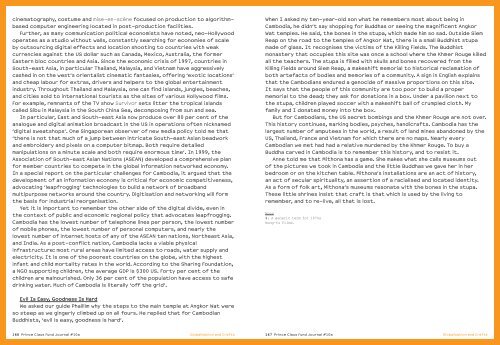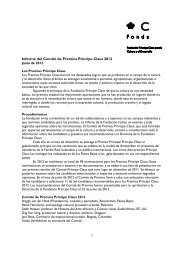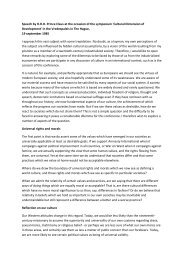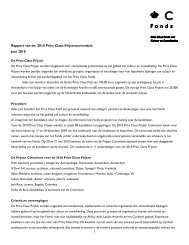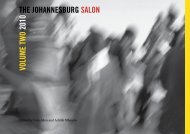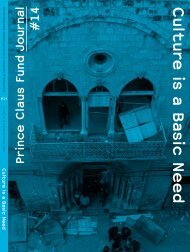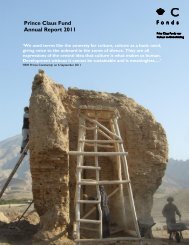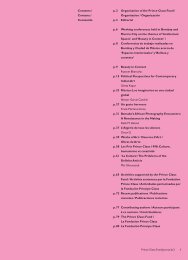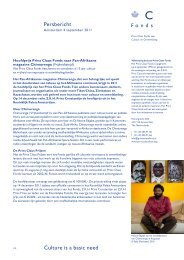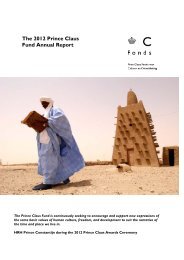Here - Prince Claus Fund
Here - Prince Claus Fund
Here - Prince Claus Fund
You also want an ePaper? Increase the reach of your titles
YUMPU automatically turns print PDFs into web optimized ePapers that Google loves.
The Post-modern Context of Rural<br />
Craft Production in Contemporary<br />
South Africa<br />
Sandra Klopper<br />
South Africa<br />
The beadwork decoration used in South African ritual not only<br />
straddles the fine line between tradition and modernity, it also<br />
establishes both designer and wearer in a unique relationship.<br />
Sandra Klopper celebrates the creativity of adversity.<br />
‘… it may be that certain kinds of symbolic creativity in the expressive<br />
and communicative activity of “disadvantaged” groups exercise their uses<br />
and economies in precisely eluding and evading formal recognition, publicity<br />
and the possible control by others of their own visceral meanings. In this<br />
case, the decontextualised search for aesthetics is, by definition, doomed<br />
to endless labour, for the aesthetic will be wherever it isn’t’. 1<br />
Until very recently, South Africa’s rural communities were commonly studied as<br />
discrete cultural or ethnic entities. In the course of the twentieth century,<br />
this notion of ethnicity as a primary framework for understanding, not only<br />
political structures and histories, but also the socio-cultural domain, was<br />
entrenched through the significance racist ideologues ascribed to ‘tribal’<br />
identities in an effort to sustain the dominance, in the region, of white settler<br />
communities. In some cases, indigenous communities tried to influence these<br />
ideologues by manipulating ethnic identities through a persuasive use of<br />
expressive cultural forms, such as the art of mural decoration. By painting murals<br />
on homestead walls and thereby becoming (quite literally) more visible, they<br />
sought to lobby state support for their efforts to secure access to resources<br />
like land. 2 In other contexts, ethnicity played a central role in strategies of<br />
resistance to white domination, and to the growing impact of Christianity on<br />
African values and cultural practices. 3<br />
Especially in recent years, however, historians and anthropologists have<br />
repeatedly questioned the role ethnicity plays in rural communities’<br />
understanding of their life experiences. It has, for example, been suggested<br />
that the increasing fluidity of global capital has led to a loss of any kind of<br />
stable self-identification based on a sense of place. 4 As Zegeye points out,<br />
moreover, in South Africa, resistance against apartheid afforded people<br />
opportunities to share ‘not only values, but also daily life strategies and tactics<br />
within the social movements they partook in’. As he rightly notes, these factors<br />
have had a huge impact on post-apartheid South Africa. 5 Following the release<br />
Figure 1<br />
Apron, Limpopo Province, South Africa,<br />
45 x 45 cm, private collection<br />
photo A. van Eeden<br />
84 <strong>Prince</strong> <strong>Claus</strong> <strong>Fund</strong> Journal #10a Popular Design and Crafts


